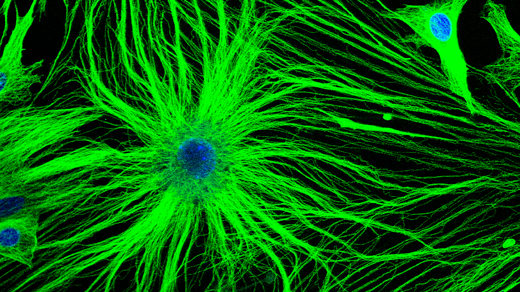Prepare to be mind-blown as we delve into the remarkable world of glial brain cells, often overshadowed by their flashy neuron counterparts. These unsung heroes have been hiding in plain sight, concealing their extraordinary powers until now.
A Glimpse into the Enigmatic World of Glial Brain Cells
While neurons have long hogged the limelight in neuroscience research, recent studies are shedding light on the astonishing capabilities of glial brain cells. Far from being mere support staff for neurons, these unsung heroes play a crucial role in maintaining brain health and function.
Glial cells come in various forms: astrocytes that provide structural support and regulate neurotransmitter levels; oligodendrocytes that produce myelin sheaths around axons for efficient signal transmission; microglia that act as immune defenders against pathogens and debris; and ependymal cells that line fluid-filled spaces within the central nervous system.
But what truly sets glial cells apart is their ability to communicate with each other through intricate networks known as gliotransmission. This complex web allows them to modulate neuronal activity, influence synaptic plasticity, and even participate in information processing – challenging our traditional understanding of brain dynamics.
The Hidden Powers Unleashed by Glial Cells
Beyond their supportive roles, glial cells possess an array of hidden powers waiting to be unraveled. Recent discoveries suggest they can actively shape neural circuits during development and adulthood through synapse formation or elimination processes called synaptogenesis or pruning respectively.
In addition to sculpting neural connections, glia also contribute significantly to learning and memory processes. They release molecules such as growth factors or cytokines that promote neuronal survival, enhance synaptic plasticity, and facilitate memory formation.
Furthermore, glial cells have been found to play a crucial role in neuroprotection. They act as the brain’s first responders during injury or disease by clearing cellular debris and releasing anti-inflammatory substances that help limit damage and promote tissue repair.
The Future of Neuroscience: Embracing Glial Cells
As we uncover more about the hidden powers of glial cells, it becomes increasingly clear that they are not just passive bystanders but active participants in brain function. Understanding their intricate mechanisms could hold the key to unlocking new treatments for neurological disorders such as Alzheimer’s disease, multiple sclerosis, or even spinal cord injuries.
In conclusion, let us no longer overlook these unsung heroes of our brains – the glial cells. Their astonishing capabilities challenge our preconceived notions of brain dynamics and offer exciting possibilities for future research and therapeutic interventions.
